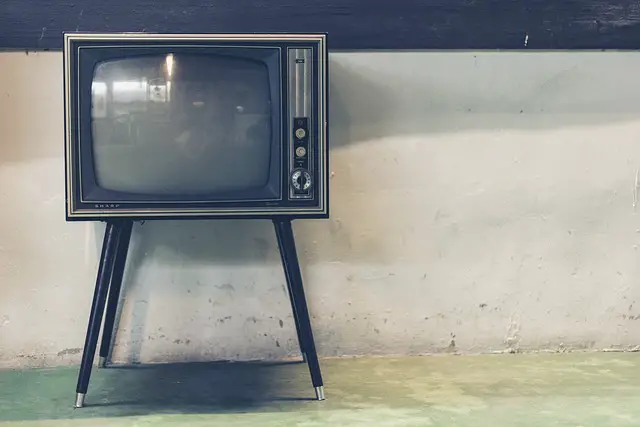Many households rely heavily on televisions for entertainment, news, and information. However, it’s important to understand that TVs, like any other electronic device, require a stable power supply to function optimally.
In this article, we will explore the impact of low voltage on TVs and discuss the potential risks it poses.
Yes, low voltage can damage your TV. Insufficient power supply can lead to diminished performance, inadequate backlighting, and damage to internal components such as the power supply unit and circuit boards
By understanding these risks, you can take appropriate measures to protect your television from damage.
Understanding TV Power Requirements
Voltage Range for TVs
Televisions typically operate within a specific voltage range, which varies depending on the model and manufacturer.
In the United States, the standard voltage for residential electrical systems is 120 volts. TVs are designed to work efficiently within this range.
Nominal Voltage for TVs
The nominal voltage is the ideal voltage level at which a TV operates optimally. For most TVs, the nominal voltage falls within the range of 110-120 volts. Deviations from this range can potentially affect the TV’s performance and longevity.
Effects of Voltage Fluctuations on TVs
Voltage fluctuations, including low voltage, can have adverse effects on your TV. When the voltage drops below the nominal level, various issues may arise, impacting the TV’s functionality and potentially causing damage.
Potential Risks of Low Voltage on TVs
Voltage Insufficiency
Insufficient power supply due to low voltage can lead to several problems for your TV.
- Insufficient Power Supply: Low voltage may result in inadequate power reaching your TV, causing it to function below its optimal level. This can lead to issues such as slow response times and delayed input recognition.
- Diminished Performance: TVs affected by low voltage may exhibit reduced brightness, contrast, and color accuracy. The overall viewing experience may be compromised, making it less enjoyable for viewers.
- Inadequate Backlighting: Backlit TVs, including LED and LCD models, rely on a consistent power supply to illuminate the screen evenly. Low voltage can cause uneven backlighting, resulting in dark spots, shadows, or uneven brightness distribution across the screen.
Damage to Internal Components
Sustained exposure to low voltage can lead to damage to the TV’s internal components.
- Overheating Issues: Low voltage can cause the TV’s power supply to work harder to compensate for the voltage drop, leading to increased heat generation. Over time, this excessive heat can damage critical components, such as the power supply unit or the display panel.
- Power Supply Failure: Constant exposure to low voltage can strain the TV’s power supply unit. This can lead to premature failure, requiring expensive repairs or replacement.
- Circuit Board Damage: Fluctuating voltage levels can cause stress on the TV’s circuit boards, potentially resulting in their malfunction or even permanent damage. This can disrupt the TV’s functionality and require professional repair.
Read also my comprehensive article: The Silent Threat: Can Low Voltage Damage Your Electronics?
Impact on TV Lifespan
Low voltage can significantly impact the lifespan of your TV.
- Reduced Longevity: TVs exposed to low voltage levels may experience a shorter lifespan compared to those operating within the optimal voltage range. The stress imposed on internal components can accelerate wear and tear, leading to early failure.
- Increased Wear and Tear: As the TV’s components struggle to compensate for low voltage, they may be subject to increased stress and operational strain. This can lead to higher chances of component failures and the need for frequent repairs.
Identifying Low Voltage Issues
Recognizing the signs of low voltage is crucial for timely intervention.
- Flickering Screen: If your TV’s screen flickers intermittently or dims randomly, it could be a sign of low voltage affecting the backlighting or power supply.
- Poor Image Quality: Low voltage can result in reduced picture quality, including decreased sharpness, distorted colors, or pixelation.
- Audio Distortions: Inadequate power supply may lead to audio problems such as static, buzzing, or low volume.
Troubleshooting Low Voltage Problems
To address low voltage issues, follow these troubleshooting steps:
- Testing the Power Supply: Ensure the power supply outlet is providing the correct voltage using a voltage tester or consult an electrician.
- Checking Voltage Levels: If you suspect low voltage, measure the voltage at the TV’s power input using a multimeter. Compare the reading with the nominal voltage range to identify any discrepancies.
- Consulting a Professional: If you encounter persistent low voltage problems, it’s advisable to seek assistance from a qualified technician or electrician to diagnose and rectify the issue.
Preventing Low Voltage Damage
Taking preventive measures can help protect your TV from low-voltage damage.
Voltage Stabilization Solutions
- Uninterruptible Power Supply (UPS): Investing in a UPS can provide your TV with a constant and stable power supply, even during voltage fluctuations or power outages.
- Voltage Regulators: Voltage regulators can help stabilize and regulate voltage levels, ensuring your TV receives a consistent and safe power supply.
- Surge Protectors: Installing surge protectors can safeguard your TV against sudden voltage spikes or power surges that could potentially damage the internal components.
Proper Electrical Installation
- Adequate Wiring: Ensure your electrical wiring is up to code and can handle the power demands of your TV and other electronics in your home.
- Grounding Requirements: Proper grounding is crucial to protect your TV from electrical disturbances. Ensure your TV and power outlets are properly grounded.
- Avoiding Overloading Circuits: Distribute the power load evenly across circuits to prevent overloading, which can lead to voltage drops.
Conclusion
Low voltage can indeed damage your TV, affecting its performance and potentially shortening its lifespan.
Understanding the risks and implementing preventive measures, such as voltage stabilization solutions and proper electrical installation, can help mitigate the potential damage caused by low voltage.
By ensuring a stable power supply, you can enjoy optimal TV performance and extend its longevity.

